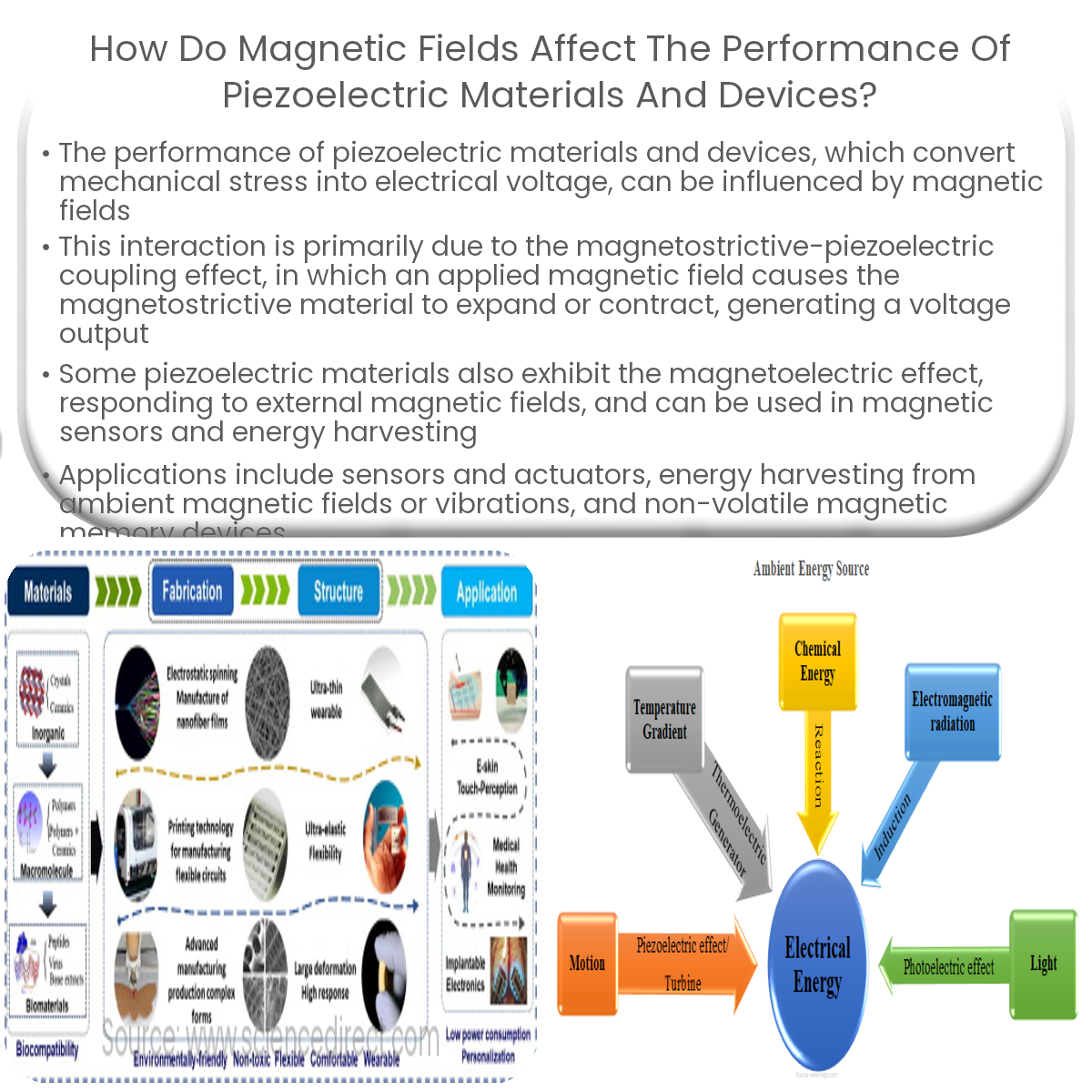Magnetic fields can affect piezoelectric materials through magnetostrictive-piezoelectric coupling and the magnetoelectric effect, impacting device performance.
Impact of Magnetic Fields on Piezoelectric Materials and Devices
Piezoelectric materials convert mechanical stress into electrical voltage and vice versa, making them ideal for various applications, such as sensors, actuators, and energy harvesting devices. In this article, we will explore how magnetic fields influence the performance of piezoelectric materials and devices.
Magnetostrictive-Piezoelectric Coupling
The interaction between magnetic fields and piezoelectric materials is primarily due to the magnetostrictive-piezoelectric coupling effect. Magnetostrictive materials change their shape when exposed to a magnetic field, while piezoelectric materials respond to mechanical stress. In a magnetostrictive-piezoelectric composite, the applied magnetic field causes the magnetostrictive material to expand or contract, which then applies stress to the piezoelectric material, resulting in a voltage output.
Magnetoelectric Effect
The magnetoelectric (ME) effect is a phenomenon in which a material exhibits both magnetic and electric polarization under the influence of an external magnetic or electric field. Some piezoelectric materials also exhibit the ME effect, which means their properties can be influenced by external magnetic fields. This effect can be exploited in devices such as magnetic sensors and energy harvesters.
Applications and Challenges
- Sensors and Actuators: Piezoelectric materials can be combined with magnetostrictive materials to create sensors and actuators that respond to both magnetic fields and mechanical stress. This enables the development of multifunctional devices with enhanced sensitivity and performance.
- Energy Harvesting: By harnessing the magnetostrictive-piezoelectric coupling effect, energy can be harvested from ambient magnetic fields or vibrations. This approach can be used to power low-energy devices, such as wireless sensors, in remote or hard-to-reach locations.
- Magnetic Memory Devices: The magnetoelectric effect in piezoelectric materials can be used to develop non-volatile magnetic memory devices with low power consumption and high-speed operation.
Despite the potential benefits, there are challenges in applying magnetic fields to piezoelectric materials and devices. For example, the magnetic field strength required for significant effects may be too high for practical applications. Additionally, the materials’ properties and performance can be influenced by factors such as temperature, mechanical stress, and material composition, which need to be carefully considered in the design process.
In conclusion, magnetic fields can affect the performance of piezoelectric materials and devices through magnetostrictive-piezoelectric coupling and the magnetoelectric effect. While challenges remain, understanding and exploiting these effects can lead to the development of innovative devices with enhanced capabilities in various applications.


